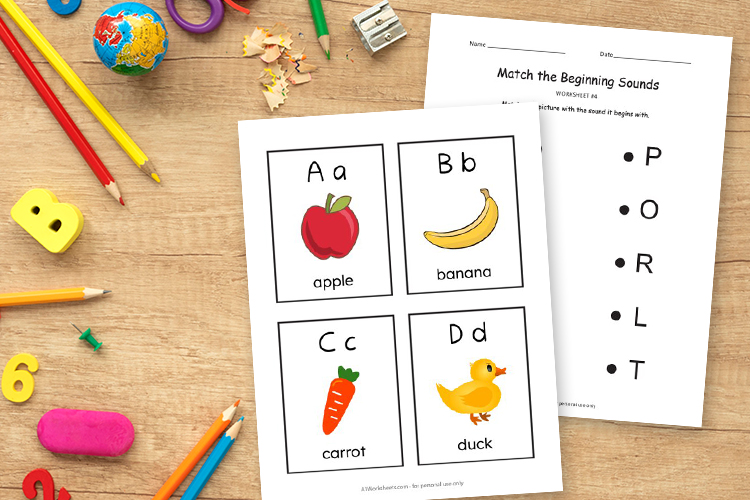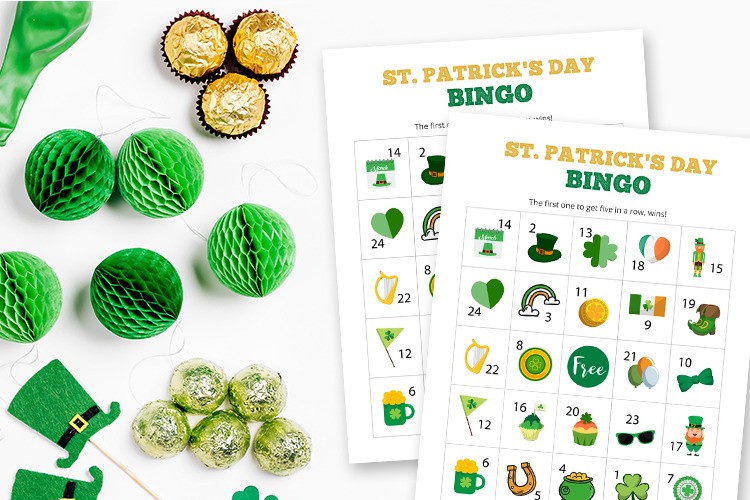These 15 Fun Pre-Writing Activities for Preschoolers will help them develop handwriting skills when they are ready to transition to Kindergarten. Engaging them in these activities is important to help strengthen their hand muscles and prepare them for writing letters.

This post contains affiliate links and we will earn commission if you buy the products through those links. For more information, please read our disclosures here
Pre-writing skills are essential for developing handwriting skills. Many young children develop fine motor skills before they can even hold a pencil properly.
There are many pre-writing activities that you can do with your child to help them improve their handwriting skills and work on their tripod grip! These fine motor activities can be simple, engaging, and lots of fun.
Why are pre-writing activities important for developing handwriting skills?
Handwriting is an essential skill that children need to develop to be successful in school and life. While many think of handwriting as simply putting pencil to paper, there is much more to it.
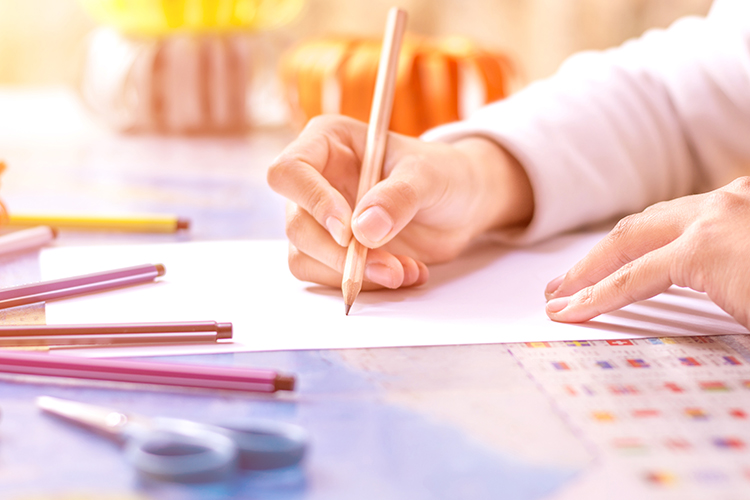
Children must have strong letter formation skills, hand strength, hand-eye coordination, and a good pincer grip to write well. These activities are a great and easy way for children to develop these skills.
Drawing lines, circles, and other simple shapes help children to develop fine motor control and letter formation skills. Squeezing putty or play dough strengthens the muscles in the hands and fingers, preparing them for holding a pencil.
Activities like threading beads or lacing cards help children to develop the skills they need for successful handwriting.
Gross Motor Skills: Strengthen Hand Muscles to Improve Letter Formation
Gross motor skills are important for writing because they help to develop the muscles in the child’s hands and arms and improve their coordination. These muscles need to be strong to form letters correctly.

Simple activities such as drawing, painting, and coloring help children build these muscles so that their hand muscles are already stronger when they are ready to write.
Similarly, simple activities like running, jumping, cycling, swimming, and climbing are equally important. Preschool teachers often incorporate gross motor activities into games and art projects.
Fun Pre-Writing Activity Ideas
Here are some fun pre-writing activity ideas that you can do with your preschool kids at home. Teachers and educators can also use these in the classroom or writing center.
Fine Motor Development Activities:
Before a child can begin to form letters, they need to develop the fine motor skills necessary for holding a pencil and making controlled movements. There are a number of activities that parents can do with their children to help them develop these skills.
Lacing Beads or Buttons onto String or Yarn.
This activity is an excellent way to improve fine motor skills and eye-hand coordination. It requires children to use both hands simultaneously, which can help to develop the muscles needed for writing. They will also enjoy learning about patterns and sequencing.
Making Homemade Playdough.
Make your own playdough. This fun activity helps build their hand muscles by squishing, rolling, and squeezing the dough.
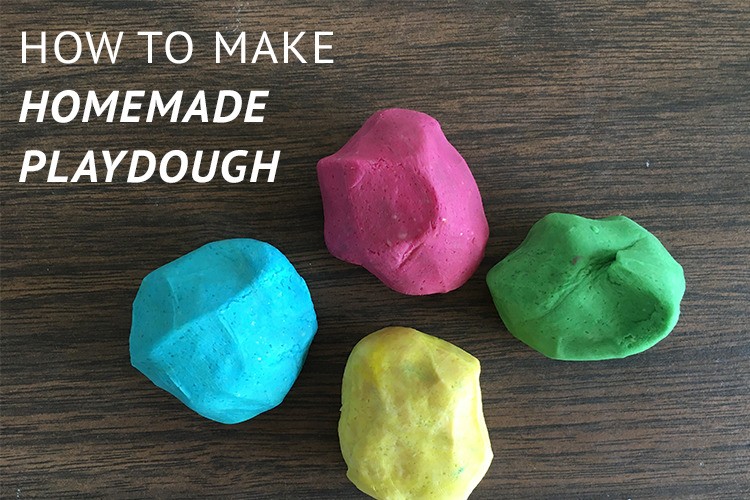
They learn how to apply pressure to create different shapes. They develop their imaginations and learn about colors and textures. Best of all, they will love squishing and shaping it into all sorts of creations!
Threading Pipe Cleaners through a Colander.
This easy fine motor activity for young kids requires them to use a pincer grip – holding the pipe cleaner between their thumb and forefinger – which helps to build the muscles needed for writing.
The child must work on carefully guiding the pipe cleaner through the small holes in the colander, which helps build concentration and develop problem-solving skills.
Picking up Small Objects with Tweezers
You can use small objects for this activity, such as beads, buttons, or coins. Simply place the objects in front of your child and let them try to pick them up with the tweezers.
As they get better at it, you can challenge them to pick up objects of different sizes or transfer them from one container to another.
Doing puzzles
It can be a simple jigsaw puzzle or something more complex. Solving puzzles is a great way to help kids concentrate while working on their hand-eye coordination.

Building with blocks or Lego
Putting the blocks or Lego pieces together helps them develop hand eye coordination. They also learn to follow instructions, identify shapes, and sequence as they build.
Playing Catch or Hopscotch.
Playing catch requires children to throw and catch a ball, which helps them control their fine motor movements. They must coordinate their hands and eyes to throw and catch the ball.
Hopscotch requires children to jump from square to square, which helps them to develop their gross motor skills. They must coordinate their hands and eyes to jump from spot to another.
Letter Formation Activities and Ideas:
Letter formation is an important skill for preschoolers to learn. Not only will it help them with their preschool writing skills, but it will also improve their fine motor skills.
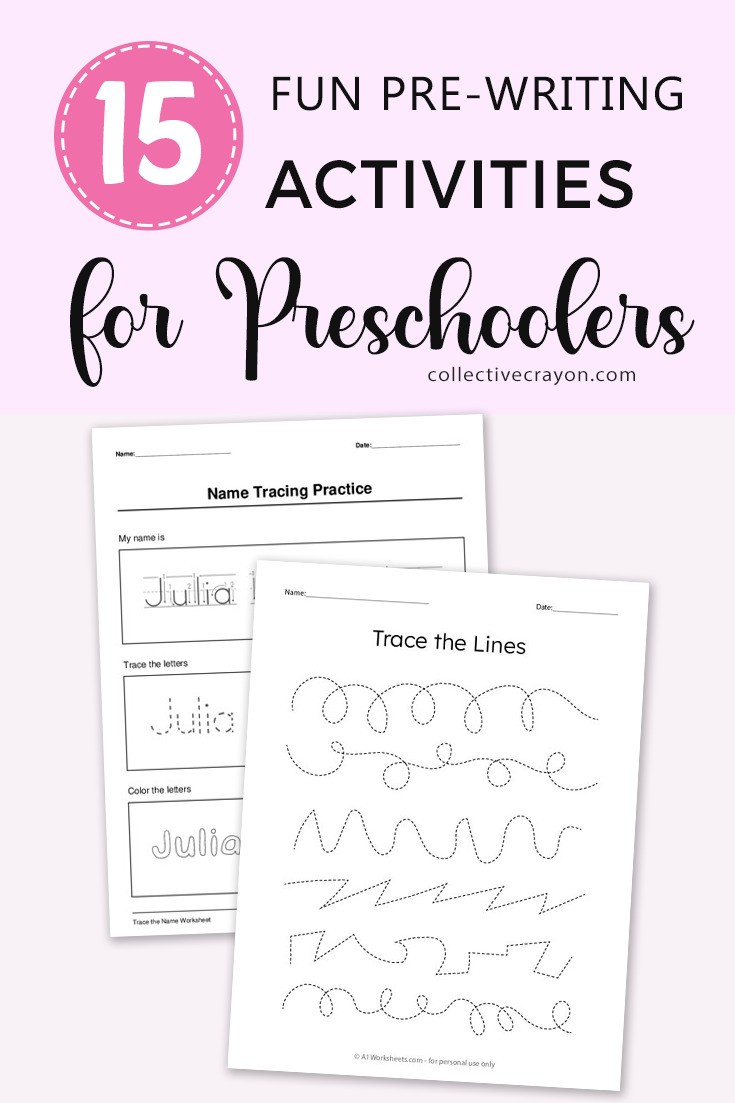
Have your child trace letters in sand, salt, or shaving cream.
Help your child practice letter formation by having them trace letters in sand, salt, shaving cream, or finger paint. This will not only be fun for them, but it will also help them to better understand how to form letters.
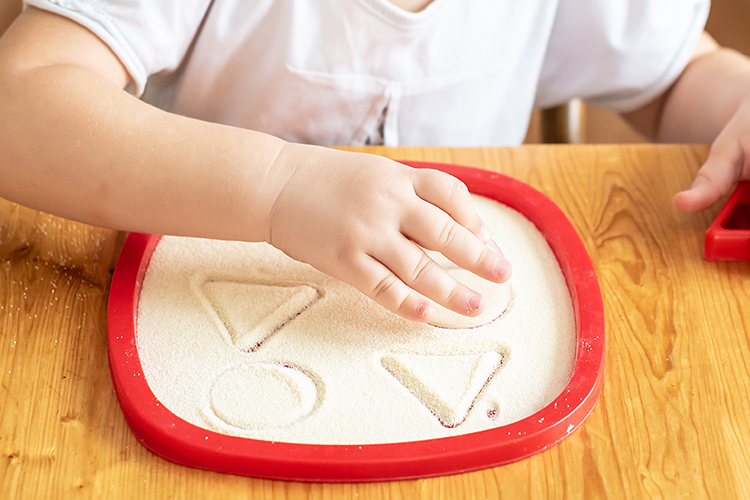
Use letter stamps and let them make their own patterns.
Encourage your child to use letter stamps to make patterns on paper. As they stamp, they will naturally start to form the letters correctly. You can also use the stamps to help your child trace the letters.
Write their own name with name tracing worksheets.
Name tracing worksheets are a great way to help them practice letter recognition. Download any of these name writing activities you can use with your pre-k student, depending on their interests and abilities.
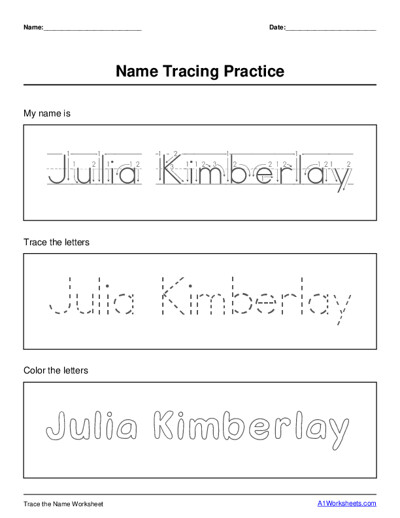
For example, you can provide them with do-to-dot or mazes worksheets, where they must follow the dots or lines to form their names. Or, you can give them a blank sheet of paper and have them trace their name using various materials, such as crayons, dry erase markers, or even edible paint.
Find the Letters Activity.
Find the letter is a great activity where the child must circle all the uppercase and lowercase letters. They can use q-tips, dot markers, or play-dough to identify them.
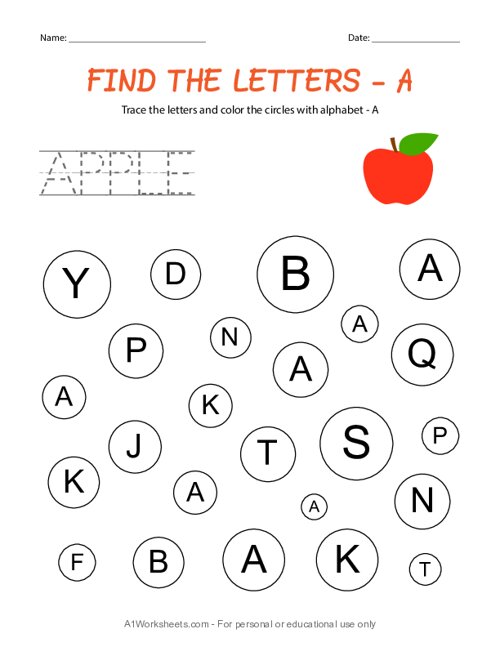
Play I Spy games using letters.
To play, simply choose an object and identify it by its initial letter sound. For example, “I spy something that starts with B.” The other players then take turns guessing what the object is. This variation is particularly effective at helping preschool students learn how to form letters correctly.
Use squishy bags to make shapes, letters, or numbers.
This is one of those fun activities where you only need a zip-top bag filled with a squishable substance like shaving cream, gel food coloring, or glue.
Kids can practice making straight lines, curves, circles, diagonal lines, and crosses by drawing them on the squish bag with their fingers or q-tips.
Sensory Trays encourage learning through sensory play.
Set up a sensory tray for them to explore. You can fill a tray with rice, flour, or sand and let your child practice scooping and pouring. You can also hide small objects in the rice and have your child search for them.
Add food coloring to the rice to create colorful designs to make it more fun. Similarly, have them write letters and numbers in a sand tray.
Draw zig-zag lines.
Have them draw zig-zag lines. Provide a piece of paper with zigzag lines drawn on it. As the child traces the lines with a pencil, they will develop the control needed to form letters and numbers.
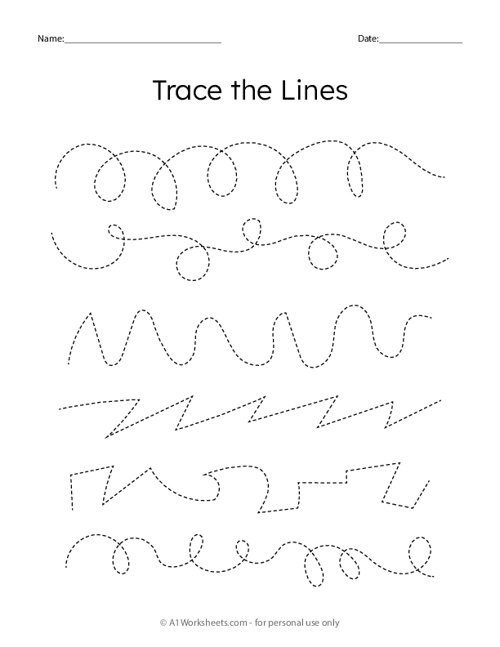
In addition, tracing lines can help to improve hand-eye coordination and visual tracking skills.
It is important to engage preschool students in pre-writing activities. These activities help to develop visual perceptual skills and a proper pencil grasp, both of which are essential for writing.
Additionally, pre-writing activities provide hands-on learning opportunities that benefit all learners.

